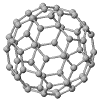The tunnels deep beneath New York that bring crystal clear water from the reservoirs upstate to the city are aging. Divers are busy assessing the infrastructure - and it's literally a high pressure job. In order to avoid time consuming daily decompressions, the divers are living in a high pressure environment for weeks at time, almost 20 times normal atmospheric pressure. As
AP reports, the pressures require that the men breathe a helium-oxygen mixture. Unfortunately, the reason given in the article for breathing the squeaky voice inducing mix: "the nitrogen in regular air is too heavy at 600 feet and their lungs could not handle the pressure." is utter nonsense.
Nitrogen does not weigh more under pressure, and the total pressure of the gas in the divers lungs is high, regardless of the identity of the gas (oxygen gas weighs more than nitrogen does, in fact). The real reason has to do with Dalton's law of partial pressures, and the fact that at high pressures, neither oxygen nor nitrogen are benign substances.
Dalton's law says that the pressure of each gas in a mixture is a function of the percentage of that gas and the total pressure of all the gases. For example, at 30,000 ft, where the total pressure is 0.3 atm and the fraction of oxygen in the air is 21%, the partial pressure of oxygen is 0.063 (humans need a partial pressure of about 0.1 atm to oxygenate their blood).
At the depth of the NYC tunnels, the total pressure is just over 18 atm, so the partial pressure of oxygen would be 3.8 atm. Above a partial pressure of roughly 1.5 atm oxygen gas is seriously toxic. The partial pressure of nitrogen 600 feet below the surface is about 14 atm. Nitrogen narcosis, rapture of the deep, sets in at pressures above 4 atm. At these depths, nitrogen is essentially an anesthetic!
Introducing an inert gas into the breathing mix, such as helium, reduces the percentage of oxygen and nitrogen in the air, thus reducing their partial pressure and reducing the danger of oxygen toxicity and nitrogen narcosis. The need for the specialized breathing mix has nothing to do with the heaviness of the nitrogen and everything to do with the toxic effects of these gases at high partial pressures.
Eliminating nitrogen completely from the mix can also reduce the potential for developing the bends (bubbles of gas that form in the tissues when pressure is reduced) - but that has to do with Henry's Law and ladies corsets, and is another blog post!
 Not that Ludwig B. - the other Ludwig B: Ludwig Boltzmann, an Austrian physicist.
Not that Ludwig B. - the other Ludwig B: Ludwig Boltzmann, an Austrian physicist. 